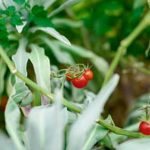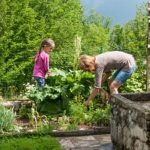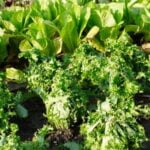As the summer months make way for cooler temperatures, it’s time to turn our attention to fall vegetable gardening in the Ozarks. This region offers a unique climate and growing conditions that present both opportunities and challenges for those looking to cultivate their own bounty of fresh produce. From choosing the right vegetables to understanding the impact of climate on gardening practices, there is much to consider when embarking on a fall vegetable garden in the Ozarks.
When it comes to fall vegetable gardening in the Ozarks, knowing which vegetables thrive in this season is essential. From hardy greens to root vegetables, there are plenty of options for those looking to extend their growing season and enjoy a harvest well into the autumn months. However, proper soil preparation and understanding the specific climate of the Ozarks are also crucial factors in achieving success with fall vegetable gardening.
In this article, we will explore the best vegetables to plant in the fall in the Ozarks, offer tips for preparing the soil, discuss how the unique climate impacts fall gardening practices, and provide guidance on mulching, watering, pest management, and harvesting and storage. Whether you’re a seasoned gardener or new to cultivating your own produce, embracing the beauty and bounty of fall vegetable gardening in the Ozarks is both rewarding and enriching.
Best Vegetables to Plant in the Fall in the Ozarks
When it comes to fall vegetable gardening in the Ozarks, there are a variety of vegetables that thrive in the cooler temperatures and shorter days. Here are some of the best vegetables to consider planting in your fall garden:
- Broccoli: Broccoli is a hardy vegetable that can withstand frost, making it an excellent choice for fall gardening in the Ozarks.
- Carrots: Carrots are a cool-season root vegetable that can be planted in late summer for a fall harvest.
- Lettuce: Lettuce varieties such as romaine, butterhead, and leaf lettuce are perfect for fall planting, as they prefer cooler temperatures and can tolerate light frosts.
- Spinach: Spinach is another cold-hardy leafy green that thrives in the fall months, making it a great addition to your autumn garden.
- Cabbage: Cabbage is a versatile vegetable that can be grown in the fall, with varieties like savoy, red, and Napa cabbage all performing well in cooler weather.
In addition to these vegetables, you may also want to consider planting radishes, kale, Swiss chard, and Brussels sprouts in your fall garden. These crops can add variety and nutritional value to your harvest while thriving in the unique climate of the Ozarks during the autumn season.
By choosing these vegetables for your fall garden, you can take advantage of the cooler temperatures and ample rainfall that characterize the Ozarks during this time of year. With proper care and attention to soil preparation and maintenance, you can enjoy a bountiful harvest of fresh, nutritious produce throughout the fall season.
Tips for Preparing the Soil for Fall Vegetable Gardening
When it comes to fall vegetable gardening in the Ozarks, preparing the soil is crucial to ensure a successful harvest. The unique climate and terrain of the Ozarks present both challenges and opportunities for gardeners, making soil preparation an essential step in the process.
Testing and Amending the Soil
Before planting your fall vegetables, it’s important to test your soil to determine its pH levels and nutrient content. You can purchase a DIY soil testing kit or send a sample to a local agricultural extension office for analysis. Based on the results, you may need to amend the soil with organic matter such as compost, manure, or other natural fertilizers to improve its quality for vegetable growth.
Tilling and Aerating
Proper tilling and aerating of the soil are essential for creating a healthy environment for plant roots to thrive. Use a garden tiller or hand tools like a shovel or pitchfork to break up compacted soil and improve its structure. This will allow air, water, and nutrients to penetrate the soil more easily, promoting healthier root development for your fall vegetables.
Managing Drainage
In the Ozarks, where heavy rainfall is common, proper drainage is critical for preventing waterlogging in your garden beds. Raised beds or adding organic matter can help improve drainage in areas with clay-rich soils. Ensuring that water can easily drain away from plants’ roots will prevent rot and disease during periods of heavy rainfall in the fall.
By taking these steps to prepare your soil for fall vegetable gardening in the Ozarks, you can create an optimal growing environment that will support healthy plant growth throughout the season. Understanding your soil’s specific needs and addressing them accordingly will set you up for a successful harvest of delicious autumn produce.
Understanding the Unique Climate of the Ozarks and Its Impact on Fall Gardening
The Ozarks region is known for its unique climate, which can present both challenges and opportunities for fall vegetable gardening. Understanding the specific characteristics of this climate is crucial for successful gardening in the fall.
Temperature and Weather Patterns
The Ozarks experience a wide range of temperatures and weather patterns throughout the fall season. The region typically sees mild to cool temperatures, with occasional fluctuations and the possibility of early frosts. Gardeners must pay close attention to local weather forecasts and be prepared to protect their crops from sudden drops in temperature.
Soil Composition
The soil composition in the Ozarks can vary significantly from one location to another. Some areas have rocky or clay-heavy soil, while others may have more fertile, loamy soil. It’s important for gardeners to assess their soil quality and make any necessary amendments to ensure optimal growing conditions for fall vegetables.
Growing Season Extension Techniques
Given the potential for early frosts in the Ozarks, it’s essential for gardeners to utilize season extension techniques to prolong the harvest window for fall vegetables. Methods such as row covers, cold frames, and mulching can help protect plants from frost damage and extend the growing season well into the fall months.
By understanding the unique climate of the Ozarks and its impact on fall gardening, gardeners can make informed decisions about plant selection, soil preparation, and cultivation techniques to maximize their success in growing fall vegetables in this region.
The Importance of Mulching and Watering in Fall Vegetable Gardening
Mulching and watering are two crucial aspects of fall vegetable gardening in the Ozarks. As the temperatures start to cool and the days become shorter, it’s important to understand how these practices can help your fall garden thrive.
First, let’s talk about mulching. Mulch plays a vital role in keeping the soil moist and maintaining consistent temperatures. In the Ozarks, where the climate can be unpredictable, a layer of mulch around your vegetable plants can help retain moisture and regulate soil temperature.
This is especially beneficial for vegetables that thrive in cooler temperatures, such as kale, carrots, and radishes. Additionally, mulch can also help suppress weed growth, which is essential in ensuring that your fall vegetables have access to all the nutrients they need to grow.
Next, we have watering – another critical component of fall vegetable gardening in the Ozarks. While the region receives a fair amount of precipitation, it’s important to monitor soil moisture levels and supplement with additional watering when necessary. This is particularly true for young seedlings and newly transplanted vegetables.
The key is to water deeply but infrequently to encourage deep root growth. Additionally, watering in the morning allows for any excess moisture to evaporate during the day, reducing the risk of fungal diseases taking hold in your garden.
Dealing With Common Pests and Diseases in Fall Vegetable Gardening in the Ozarks
When embarking on fall vegetable gardening in the Ozarks, it’s important to be aware of the potential pests and diseases that can threaten your crops. By understanding these common issues, you can take proactive measures to protect your plants and ensure a bountiful harvest.
Here are some of the most common pests and diseases to watch out for when fall vegetable gardening in the Ozarks:
1. Aphids – These small insects feed on plant sap and can quickly infest your garden. Look for yellowing or distorted leaves as a sign of aphid presence.
2. Powdery Mildew – This fungal disease is characterized by a white, powdery substance on the leaves of plants. It thrives in humid conditions, so be sure to provide adequate air circulation.
3. Cabbage Worms – As their name suggests, these pests target crops like cabbage, broccoli, and cauliflower. Keep an eye out for green caterpillars on your plants.
To prevent and manage these pests and diseases, consider implementing the following strategies:
– Introduce beneficial insects such as ladybugs or lacewings to prey on aphids.
– Rotate your crops each season to disrupt pest life cycles.
– Use organic sprays or neem oil to control powdery mildew.
By staying vigilant and taking proactive measures, you can minimize the impact of pests and diseases on your fall vegetable garden in the Ozarks. This will allow you to enjoy a successful harvest of fresh, healthy produce throughout the season.
Harvesting and Storage Tips for Fall Vegetables in the Ozarks
When it comes to fall vegetable gardening in the Ozarks, harvesting and storage are crucial steps to ensure that you can enjoy the fruits of your labor well into the winter months. With a little planning and proper techniques, you can extend the life of your fall harvest and continue to enjoy fresh produce long after the growing season has ended.
One important tip for harvesting fall vegetables in the Ozarks is to pay attention to the local climate and anticipated first frost date. It’s essential to harvest cold-sensitive crops such as tomatoes, peppers, and beans before the first frost hits, as these vegetables will not survive a freeze. On the other hand, some cold-hardy vegetables like kale, carrots, and Brussels sprouts actually benefit from exposure to cooler temperatures and may even become sweeter after a light frost.
Once harvested, proper storage is key to maximizing the shelf life of your fall vegetables. Root vegetables such as carrots, beets, and potatoes should be stored in a cool, dark place with high humidity to prevent them from drying out. Leafy greens like lettuce and spinach should be stored in the refrigerator crisper drawer or in an airtight container with a damp paper towel to help retain moisture.
For those who have limited space or live in urban areas without access to a backyard garden plot, there are still options for fall vegetable gardening in the Ozarks. Container gardening on patios or balconies can be successful with proper care and attention.
Additionally, many community gardens or urban farms offer opportunities for individuals to rent or share garden plots specifically for fall vegetable gardening. These resources provide access to shared tools, knowledge, and sometimes even communal cold frames or greenhouse space for extending the growing season beyond what might typically be possible in an individual’s own backyard.
Overall, by following these harvesting and storage tips for fall vegetables in the Ozarks, you can make the most of your autumn harvest and enjoy fresh produce well into the winter months.
| Vegetable | Harvesting Time | Storage Tips |
|---|---|---|
| Carrots | Late Fall | In a cool, dark place with high humidity |
| Kale | Late Fall/Early Winter | In a plastic bag in refrigerator crisper drawer with a damp paper towel |
Community Resources and Events for Fall Vegetable Gardening in the Ozarks
If you’re looking to expand your knowledge and network with other fall vegetable gardeners in the Ozarks, there are several community resources and events that can help you connect with like-minded individuals. One great resource is the local agricultural extension office, which often offers workshops, classes, and demonstrations specifically geared towards fall gardening in the Ozarks. These events can provide valuable information on best practices, seasonal tips, and local gardening resources.
Another way to get involved in the fall vegetable gardening community in the Ozarks is to join a local gardening club or organization. These groups often host regular meetings, seed exchanges, and plant sales that can help you connect with experienced gardeners and learn from their expertise. Additionally, many of these clubs organize community gardens or volunteer opportunities where you can get hands-on experience while giving back to your local area.
Finally, consider attending fall gardening events or festivals in the Ozarks. These gatherings often feature educational booths, expert speakers, and interactive activities that can enrich your understanding of fall vegetable gardening in the region.
From pumpkin festivals to harvest fairs, these events offer a fun and informative way to celebrate the beauty and bounty of fall vegetable gardening in the Ozarks. By taking advantage of these community resources and events, you can enhance your fall gardening experience while also contributing to the vibrant gardening community in the Ozarks.
Conclusion
In conclusion, fall vegetable gardening in the Ozarks offers a wealth of opportunities for both experienced and novice gardeners. The unique climate of the region presents its own challenges, but with careful planning and preparation, it is possible to enjoy a bountiful harvest of fresh produce well into the autumn months.
By selecting the best vegetables for fall planting, preparing the soil effectively, understanding the local climate, and implementing proper watering and mulching techniques, gardeners can set themselves up for success.
One of the most rewarding aspects of fall vegetable gardening in the Ozarks is the opportunity to enjoy fresh, homegrown produce long after summer has ended. With an abundance of community resources and events available to support local gardeners, there are ample opportunities to connect with like-minded individuals, learn new techniques, and share in the joys of a successful harvest.
Whether it’s attending a local gardening workshop or participating in a community garden initiative, there are countless ways to tap into the collective knowledge and experience of fellow gardeners in the Ozarks.
As we embrace the beauty and bounty of fall vegetable gardening in the Ozarks, it’s important to remember that every season brings its own set of rewards and challenges. By taking advantage of the resources available and making use of effective techniques for soil preparation, pest management, and harvesting and storage, gardeners can look forward to enjoying a successful fall harvest year after year.
Fall vegetable gardening in the Ozarks is not just about growing food-it’s about fostering a sense of community, connecting with nature, and reaping the rewards of hard work and dedication.
Frequently Asked Questions
What Can Be Planted in the Fall in Missouri?
In Missouri, various crops can be planted in the fall, including cool-season vegetables like broccoli, kale, lettuce, and spinach. Fall is also a good time to plant garlic, onions, and certain cover crops like clover.
When Should I Start My Fall Vegetable Garden?
The timing for starting a fall vegetable garden depends on the specific climate and weather patterns of your area in Missouri. Generally, it’s recommended to start planting in late summer to early fall to allow the plants to establish before winter.
When Should I Start My Fall Garden in Arkansas?
When to start a fall garden in Arkansas also depends on the climate and weather conditions. Typically, planting can begin in late summer or early fall to take advantage of the cooler temperatures and ample rainfall. This allows plants to establish before winter sets in.

If you’re looking to get into vegetable gardening, or are just looking for some tips on how to make your current garden better, then you’ve come to the right place! My name is Ethel and I have been gardening for years. In this blog, I’m going to share with you some of my best tips on how to create a successful vegetable garden.





